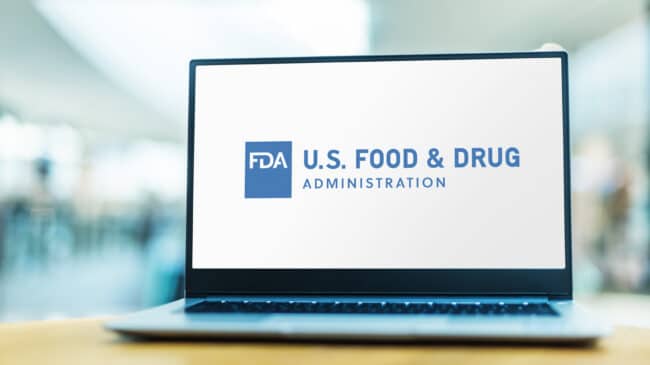The U.S. e-cigarette market is awash with illicit vapes. Few consumers or retailers know which products are legal and which are not. Thanks to the U.S. Food and Drug Administration’s (FDA) decision to deny authorization for more than 99 percent of e-cigarettes, crushing the domestic vape market, companies mostly based in China have stepped in to satisfy consumer demand for these safer alternatives to cigarettes.
Members of Congress vented frustration at the FDA over the chaotic U.S. vape market at a Senate Judiciary hearing on June 12. Spearheaded by Sen. Dick Durbin (D-Ill.), the hearing was titled “Combatting the Youth Vaping Epidemic by Enhancing Enforcement Against Illegal Cigarettes.” Officials from the FDA, the U.S. Department of Justice, anti-tobacco groups, and the e-cigarette industry all appeared to present testimony.
Senators showed Dr. Brian King, the FDA’s chief tobacco regulator, pictures of illegal vapes being sold less than a mile from the FDA’s headquarters with no apparent consequences. King insisted that the FDA needs more resources to tackle the illicit market, pointing to a new multi-agency task force established two days before the hearing that would crack down on illegal vapes. Senators worried that such a large, unregulated market was targeting kids and could threaten public health and were bewildered as to how the market has gotten so out of the FDA’s control.
While claims of widespread youth vaping are disputable—youth vaping has dropped more than 60 percent since 2019—the issue of illegal e-cigarettes is a real one. Because the FDA fails to authorize them, almost all e-cigarettes sold today in the United States are illegal. The rise of flavored disposable vapes flooding the market from China was particularly concerning to the committee. These vapes have become increasingly prevalent since 2019 and could make up as much as 50 percent of the total e-cigarette market.
But why are so many vapes illegal in the first place, given that they’re substantially safer than cigarettes? The answer lies in what Sen. John Cornyn (R-Texas) described during the hearing as the FDA’s “Kafkaesque” regulatory process for authorizing e-cigarettes on the U.S. market. Every model and flavor of e-cigarette must have its own application submitted to the FDA at enormous expense. Each product must demonstrate it is appropriate for the protection of public health in that the benefits for adult smokers will outweigh the risk of youth using the product.
None have met this threshold so far, according to the FDA. Exactly how a non-tobacco-flavored e-cigarette can surpass this barrier remains unclear. Earlier this year, the U.S. Court of Appeals for the 5th Circuit concluded that the agency had instituted a de facto ban on vape flavors via these regulatory hurdles.
Legitimate companies find it almost impossible to comply with the current regulatory regime. However, companies less willing to stick to the rules have stepped into the breach to satisfy consumer demand, resulting in a huge gray and black market.
“Look, if we’re going to establish a byzantine labyrinth of regulations to do this stuff, then for heaven’s sake, at least make the regime work,” Sen. Mike Lee (R-Utah) told King. “The worst thing you can do is set those up so as to choke out U.S. producers that are trying to comply with the law and then open the floodgates so that the illegal Chinese products can move in and be sold unabated.”
The only legal vapes on the market today are sold in tobacco flavors, and few people use them. There remains a backlog of e-cigarette product applications, including applications from the former market leader, Juul. To compare, new cigarettes are authorized regularly.
Durbin and fellow Democrats criticized the FDA for not cracking down on the supply of illegal vapes and demanded that all flavored e-cigarettes be immediately removed from the market. However, as Sen. Thom Tillis (R-N.C.) pointed out, even if the FDA leveraged the enforcement options available to the agency, it still isn’t enough to create a functioning legal market.
Early in the hearing, Durbin claimed that tobacco companies invented e-cigarettes to hook a new generation of kids to nicotine and reverse the steady decline in cigarette sales. In reality, the e-cigarette market as we know it today was started by a Chinese chemist named Hon Lik, himself a heavy smoker, as a way of trying to quit. His initial invention birthed an industry that continuously innovates to improve standards and consumer satisfaction and has become the most popular and effective method for smokers to quit cigarettes.
Efforts to further restrict e-cigarettes will not just prove ineffective, but they may have unintended consequences. Two papers released the same week as the hearing suggest bans on flavored e-cigarettes may increase smoking among teens and adults below the age of 25.
Despite the contentious hearing, it’s unlikely the FDA will make any substantive changes that allow for more legal adult options in e-cigarettes. However, these decisions, in some form or another, may be taken out of the FDA’s hands. The Supreme Court is set to decide on June 20 whether to take on a case challenging the FDA’s current regulatory regime of e-cigarettes, which could fundamentally alter the regulatory landscape for nicotine products.

